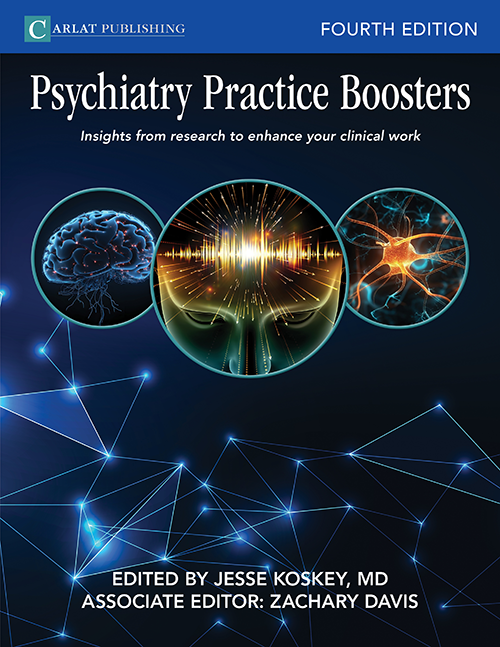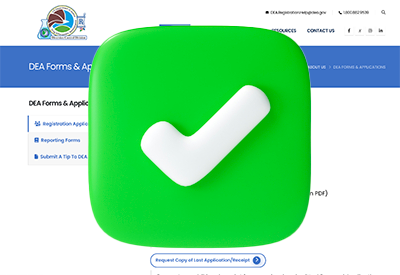Home » Assessing Bipolar Disorder in Children and Adolescents
EXPERT Q&A
Assessing Bipolar Disorder in Children and Adolescents
October 18, 2021
From The Carlat Child Psychiatry Report
 Anna Van Meter, MD
Anna Van Meter, MD
Assistant professor, Institute of Behavioral Science at the Feinstein Institutes for Medical Research, Northwell Health, Manhasset, NY. Assistant professor, Donald and Barbara Zucker School of Medicine at Hofstra/Northwell.
Dr. Van Meter has disclosed no relevant financial or other interests in any commercial companies pertaining to this educational activity.
CCPR: Can you talk about usual practice in assessing children and adolescents for bipolar disorder?
Dr. Van Meter: Despite decades of good research demonstrating that young people are affected by bipolar disorder, it’s often a diagnosis of last resort. For example, somebody might be diagnosed initially with major depressive disorder and treated with an antidepressant, but it doesn’t help them or they get agitated. Or someone might initially have a diagnosis of ADHD or another behavioral disorder. The provider may try different medications to address those symptoms, only moving toward a diagnosis of bipolar disorder when the patient fails to improve or when symptoms get worse.
CCPR: Share some more with us about the history of the diagnosis.
Dr. Van Meter: In the 1990s, there was increased attention and research on bipolar disorder in youth. The research groups led by Barbara Geller and Joe Biederman published work showing that youth, including prepubertal children, could experience the symptoms of bipolar disorder, and others started studying bipolar disorder in youth as well. This early work coincided with an increase in clinical diagnoses and, subsequently, a fair amount of controversy regarding the validity of the diagnosis of bipolar disorder in youth. Some believed bipolar disorder in youth was unique to America because other countries weren’t seeing the same increase in clinical diagnoses. I studied the community prevalence of bipolar disorder in youth around the world to see whether its actual prevalence was increasing and whether the increase was specific to the US.
CCPR: What did you find?
Dr. Van Meter: We found in two meta-analyses that the community prevalence of bipolar disorder in youth has been stable since it was originally assessed in the 1980s, with no big differences between the prevalence in the US and other countries once you account for the fact that, in the US, some studies take a broader perspective of bipolar disorder (Van Meter AR et al, J Clin Psychiatry 2019;80(3):18r12180). If you’re using non-DSM or non-ICD criteria and classify even very brief hypomanic episodes, more people meet the criteria.
CCPR: What diagnostic criteria do you recommend?
Dr. Van Meter: There’s been controversy about that, but evidence shows that unmodified DSM or ICD criteria are best for diagnosing bipolar disorder in young people (Goldstein BI et al, Bipolar Disord 2017;19(7):524–543). Naturally, the presentation of grandiosity in a 13-year-old is going to look different than in a 33-year-old, but you can understand what that is at the developmental level of the child. Some of the debate about the diagnosis of bipolar disorder in youth has been about extreme irritability, which some have classified as part of the “broad spectrum” of bipolar disorder. This damaged the perception of bipolar disorder as a valid diagnosis in youth. Most kids who have a mental health disorder are irritable; kids with tantrums or extreme irritability without other episodic mood symptoms shouldn’t be diagnosed with bipolar disorder.
CCPR: That makes me think about other disorders. Can you tell us more about symptom overlap of bipolar disorder with other conditions, such as DMDD and ADHD?
Dr. Van Meter: It’s challenging. I was involved in another meta-analysis looking for hallmark symptoms of mania in youth. The most prevalent manic symptoms—irritability, mood lability, distractibility, high energy—overlap with other childhood disorders (Van Meter AR et al, Bipolar Disord 2016;18(1):19–32). When assessing for bipolar disorder, looking for the change in functioning and episodic presentation is important. The diagnosis of disruptive mood dysregulation disorder (DMDD) was intended to provide a diagnostic home for kids like those who had severe chronic irritability. However, the research since 2013, when DMDD was added to DSM-5, largely has not supported DMDD as a distinct diagnostic entity (Bruno A et al, Psychiatry Res 2019;279:323–330). In most studies, it overlaps significantly with oppositional defiant disorder or other disruptive behavior disorders, and in many cases the medications used to treat youth with DMDD are the same as those often used for bipolar disorder. So I don’t think that DMDD solved the problem. With ADHD we may see similar symptoms, but the illness course is chronic—even though the symptoms may change in intensity over the day. It’s not like a child is hyperactive and has poor attention for a month, then does much better for a couple of months after that. (Editor’s note: See our interview with Dr. Blader on page 7 for more information on treating aggression in ADHD.)
CCPR: How does this symptom overlap impact the timely diagnosis and treatment of bipolar disorder in children?
Dr. Van Meter: It has a huge impact. On average, people go several years from when they first seek services to when they get a diagnosis of bipolar disorder (Marchand WR et al, J Psychiatr Pract 2006;12(2):128–133). If people start having symptoms around age 15, on average, then that’s early to mid-20s before they get the right diagnosis and treatment—a lot of important developmental milestones should occur during this period. Another factor is that usually the first episode is depression, not mania or hypomania. Somebody may be on a bipolar trajectory, but they haven’t yet manifested the symptoms that would enable a clinician to make the diagnosis.
CCPR: How likely is it that a depressed teen will turn out to have bipolar disorder?
Dr. Van Meter: More than 10% of adolescents have experienced an episode of major depression, compared to 2% or 3% with bipolar disorder. Of those with depression, about 10% will develop an episode of mania or hypomania (Beesdo K et al, Bipolar Disord 2009;11(6):637–649). Having a family history of bipolar disorder or experiencing any subthreshold symptoms of mania further increases the risk (Baldessarini RJ et al, J Affect Disord 2013;148(1):129–135).
CCPR: What advice do you have for sorting this out?
Dr. Van Meter: Ask depressed teens about any history of hypomanic symptoms, including elevated mood and grandiosity, and get their family history. This can be difficult because people aren’t thinking about times that they felt better than usual when they’re coming for a mental health visit. Ask about times of mood lability, decreased need for sleep, or any symptoms that might indicate higher risk of being on the bipolar spectrum. If teens have a family history of bipolar disorder, that also increases the likelihood of a bipolar trajectory and can inform treatment decisions, even if they don’t yet meet diagnostic criteria for bipolar disorder.
CCPR: What about the comorbidity of bipolar disorder with other conditions?
Dr. Van Meter: A majority of youth with bipolar disorder have multiple comorbidities (Van Meter AR et al, J Abnorm Child Psychol 2013;41(3):367–378). This makes it harder to disentangle which symptom counts toward one diagnosis or another, but doing so is important to help ensure an accurate and parsimonious diagnosis. To help sort things out, work with the family to chart when different symptoms started and stopped. For example, the patient may tell you that their symptoms of ADHD were present early and the mood symptoms started later. You can say: “OK, you’ve been distractible since you were 5, so we’re not going to count distractibility as one of your manic symptoms.”
CCPR: How should we be screening for bipolar disorder?
Dr. Van Meter: The most important thing is to do it. Everybody who works with young people should screen for manic symptoms in any child or teen having depressed mood or externalizing behavior problems. Start with a broad screening tool, like the Child Behavior Checklist, which must be purchased, or the Strengths and Difficulties Questionnaire, which is free. These tools touch on a lot of symptom domains. Based on which domains are elevated, administer more disorder-specific symptom checklists. For manic symptoms, I like both the parent and self-report versions of the General Behavior Inventory 10-Item Mania Rating Scale. It’s quick and helps the family report whether the child has had symptoms of mania or hypomania. If some of those questions come up positive, do a more thorough assessment. If not, you can move forward with your diagnostic assessment and not worry as much about it. (Editor’s note: See link to our website for resources for these scales.)
CCPR: Is there a diagnostic algorithm that might be helpful?
Dr. Van Meter: I’m a fan of the nomogram based on Bayes’ theorem. It’s a simple tool available in paper-and-pencil form or through apps. The nomogram combines pieces of clinical information in a way that is less susceptible to bias compared to relying on clinical judgment (Jenkins MM et al, Prof Psychol Res Pr 2011;42(2):121–129. See link above for download). First, on the left side of the nomogram, you check the pretest probability of a bipolar diagnosis. In an outpatient clinic, that might be 10%. On an inpatient unit, it would be significantly higher—it’s the average prevalence of bipolar disorder in your setting. Second, based on the outcome of the screening measure, you put a dot on the middle line for the likelihood ratio associated with that score. Last, you literally connect the dots, and the nomogram tells you how likely it is that all these factors might result in a bipolar outcome (posterior probability). You can update the posterior probability with new information such as a family history of bipolar disorder.
CCPR: How does estimating the posterior probability impact treatment?
Dr. Van Meter: This estimate can help you make informed treatment decisions. If it’s a low probability, you can wait and see without addressing symptoms immediately. If it’s a medium probability, say 35%–70%, do more thorough testing and interviewing. If it’s higher than that, treat the symptoms (Youngstrom EA et al, Cognitive and Behavioral Practice 2015;22(1):20–35).
CCPR: Do you have any tips that might help when doing an assessment?
Dr. Van Meter: Anchor symptoms to different time periods and events. Ask specifically, “Was it summer or were you in school? Was it over your winter break?” This helps create a timeline of when different symptoms stopped and started. By comparison, if you ask the child, “Was there ever a time when you had a lot of mood variability?” and then ask the parents, “Was there ever a time when the child was talking too much or too fast?” and get affirmative answers to both questions, you won’t know if they happened at the same time or if an event was prompted by the child having a birthday, going through final exams, or something else. Get as much detail as the patient and family can provide to establish whether the symptoms are episodic.
CCPR: How do you know that the symptoms you are asking about are what the patient is thinking about?
Dr. Van Meter: I work to get as much detail as possible. Racing thoughts are a good example. From a clinician’s perspective, when we say “racing thoughts” we’re looking for somebody who’s having lots of ideas, planning things, coming up with different schemes. But from a patient’s perspective, “racing thoughts” often means ruminations or anxiety, which wouldn’t necessarily be consistent with mania. So I will say, “OK, so you have those fast thoughts. Can you tell me a little about the content of the thoughts?” It is also important to take a structured approach, rather than poking around randomly, so you cover the range of possible symptoms.
CCPR: How do ethnicity, culture, and other social determinants impact how we see symptoms?
Dr. Van Meter: Black individuals are more likely to be diagnosed with a psychotic disorder, like schizophrenia, than bipolar disorder (Akinhanmi MO et al, Bipolar Disord 2018;20(6):506–514). Implicit biases affect mental health care, just as they do other domains. Behaviors may be considered symptomatic in one culture but fairly typical in another. You can ask, “Is this typical of your peers and of people you grew up with?” (Editor’s note: See “Cultural Competence: Impact on Clinical Care” in CCPR Jan/Feb/March 2021.) Given that people from some cultural backgrounds are hesitant to seek mental health care, it’s also important to be sensitive when describing the diagnostic process and its goals. This can help people feel more comfortable with sharing their concerns.
CCPR: Are there other environmental or social determinants that impact assessment of bipolar disorder?
Dr. Van Meter: Access to evidence-based mental health care is limited. In the US, most people do not have quality care that they can easily and inexpensively access. Assessing for bipolar disorder requires some specialized knowledge and skills. Pediatricians or school counselors—the providers youth are most likely to see—do not necessarily have that specialized knowledge. This contributes to the delays in diagnosis and suboptimal treatment that so many youths with bipolar disorder experience. The shortage of child and adolescent psychiatrists and psychologists is especially problematic for young people with more significant mental health needs and for those from poor and underserved groups.
CCPR: Any final thoughts?
Dr. Van Meter: Bipolar disorder in young people can be a challenging diagnosis, but there are decades of evidence showing that it affects young people during a key developmental period when they’re setting the foundation for their adult lives. While there is justified concern about stigma when a young person is diagnosed with a serious mental illness, I think not diagnosing and treating that illness, not giving that young person the best opportunity to thrive, is a greater risk.
CCPR: Thank you for your time, Dr. Van Meter.
Child Psychiatry Expert Q&ADr. Van Meter: Despite decades of good research demonstrating that young people are affected by bipolar disorder, it’s often a diagnosis of last resort. For example, somebody might be diagnosed initially with major depressive disorder and treated with an antidepressant, but it doesn’t help them or they get agitated. Or someone might initially have a diagnosis of ADHD or another behavioral disorder. The provider may try different medications to address those symptoms, only moving toward a diagnosis of bipolar disorder when the patient fails to improve or when symptoms get worse.
CCPR: Share some more with us about the history of the diagnosis.
Dr. Van Meter: In the 1990s, there was increased attention and research on bipolar disorder in youth. The research groups led by Barbara Geller and Joe Biederman published work showing that youth, including prepubertal children, could experience the symptoms of bipolar disorder, and others started studying bipolar disorder in youth as well. This early work coincided with an increase in clinical diagnoses and, subsequently, a fair amount of controversy regarding the validity of the diagnosis of bipolar disorder in youth. Some believed bipolar disorder in youth was unique to America because other countries weren’t seeing the same increase in clinical diagnoses. I studied the community prevalence of bipolar disorder in youth around the world to see whether its actual prevalence was increasing and whether the increase was specific to the US.
CCPR: What did you find?
Dr. Van Meter: We found in two meta-analyses that the community prevalence of bipolar disorder in youth has been stable since it was originally assessed in the 1980s, with no big differences between the prevalence in the US and other countries once you account for the fact that, in the US, some studies take a broader perspective of bipolar disorder (Van Meter AR et al, J Clin Psychiatry 2019;80(3):18r12180). If you’re using non-DSM or non-ICD criteria and classify even very brief hypomanic episodes, more people meet the criteria.
CCPR: What diagnostic criteria do you recommend?
Dr. Van Meter: There’s been controversy about that, but evidence shows that unmodified DSM or ICD criteria are best for diagnosing bipolar disorder in young people (Goldstein BI et al, Bipolar Disord 2017;19(7):524–543). Naturally, the presentation of grandiosity in a 13-year-old is going to look different than in a 33-year-old, but you can understand what that is at the developmental level of the child. Some of the debate about the diagnosis of bipolar disorder in youth has been about extreme irritability, which some have classified as part of the “broad spectrum” of bipolar disorder. This damaged the perception of bipolar disorder as a valid diagnosis in youth. Most kids who have a mental health disorder are irritable; kids with tantrums or extreme irritability without other episodic mood symptoms shouldn’t be diagnosed with bipolar disorder.
CCPR: That makes me think about other disorders. Can you tell us more about symptom overlap of bipolar disorder with other conditions, such as DMDD and ADHD?
Dr. Van Meter: It’s challenging. I was involved in another meta-analysis looking for hallmark symptoms of mania in youth. The most prevalent manic symptoms—irritability, mood lability, distractibility, high energy—overlap with other childhood disorders (Van Meter AR et al, Bipolar Disord 2016;18(1):19–32). When assessing for bipolar disorder, looking for the change in functioning and episodic presentation is important. The diagnosis of disruptive mood dysregulation disorder (DMDD) was intended to provide a diagnostic home for kids like those who had severe chronic irritability. However, the research since 2013, when DMDD was added to DSM-5, largely has not supported DMDD as a distinct diagnostic entity (Bruno A et al, Psychiatry Res 2019;279:323–330). In most studies, it overlaps significantly with oppositional defiant disorder or other disruptive behavior disorders, and in many cases the medications used to treat youth with DMDD are the same as those often used for bipolar disorder. So I don’t think that DMDD solved the problem. With ADHD we may see similar symptoms, but the illness course is chronic—even though the symptoms may change in intensity over the day. It’s not like a child is hyperactive and has poor attention for a month, then does much better for a couple of months after that. (Editor’s note: See our interview with Dr. Blader on page 7 for more information on treating aggression in ADHD.)
CCPR: How does this symptom overlap impact the timely diagnosis and treatment of bipolar disorder in children?
Dr. Van Meter: It has a huge impact. On average, people go several years from when they first seek services to when they get a diagnosis of bipolar disorder (Marchand WR et al, J Psychiatr Pract 2006;12(2):128–133). If people start having symptoms around age 15, on average, then that’s early to mid-20s before they get the right diagnosis and treatment—a lot of important developmental milestones should occur during this period. Another factor is that usually the first episode is depression, not mania or hypomania. Somebody may be on a bipolar trajectory, but they haven’t yet manifested the symptoms that would enable a clinician to make the diagnosis.
CCPR: How likely is it that a depressed teen will turn out to have bipolar disorder?
Dr. Van Meter: More than 10% of adolescents have experienced an episode of major depression, compared to 2% or 3% with bipolar disorder. Of those with depression, about 10% will develop an episode of mania or hypomania (Beesdo K et al, Bipolar Disord 2009;11(6):637–649). Having a family history of bipolar disorder or experiencing any subthreshold symptoms of mania further increases the risk (Baldessarini RJ et al, J Affect Disord 2013;148(1):129–135).
CCPR: What advice do you have for sorting this out?
Dr. Van Meter: Ask depressed teens about any history of hypomanic symptoms, including elevated mood and grandiosity, and get their family history. This can be difficult because people aren’t thinking about times that they felt better than usual when they’re coming for a mental health visit. Ask about times of mood lability, decreased need for sleep, or any symptoms that might indicate higher risk of being on the bipolar spectrum. If teens have a family history of bipolar disorder, that also increases the likelihood of a bipolar trajectory and can inform treatment decisions, even if they don’t yet meet diagnostic criteria for bipolar disorder.
CCPR: What about the comorbidity of bipolar disorder with other conditions?
Dr. Van Meter: A majority of youth with bipolar disorder have multiple comorbidities (Van Meter AR et al, J Abnorm Child Psychol 2013;41(3):367–378). This makes it harder to disentangle which symptom counts toward one diagnosis or another, but doing so is important to help ensure an accurate and parsimonious diagnosis. To help sort things out, work with the family to chart when different symptoms started and stopped. For example, the patient may tell you that their symptoms of ADHD were present early and the mood symptoms started later. You can say: “OK, you’ve been distractible since you were 5, so we’re not going to count distractibility as one of your manic symptoms.”
CCPR: How should we be screening for bipolar disorder?
Dr. Van Meter: The most important thing is to do it. Everybody who works with young people should screen for manic symptoms in any child or teen having depressed mood or externalizing behavior problems. Start with a broad screening tool, like the Child Behavior Checklist, which must be purchased, or the Strengths and Difficulties Questionnaire, which is free. These tools touch on a lot of symptom domains. Based on which domains are elevated, administer more disorder-specific symptom checklists. For manic symptoms, I like both the parent and self-report versions of the General Behavior Inventory 10-Item Mania Rating Scale. It’s quick and helps the family report whether the child has had symptoms of mania or hypomania. If some of those questions come up positive, do a more thorough assessment. If not, you can move forward with your diagnostic assessment and not worry as much about it. (Editor’s note: See link to our website for resources for these scales.)
CCPR: Is there a diagnostic algorithm that might be helpful?
Dr. Van Meter: I’m a fan of the nomogram based on Bayes’ theorem. It’s a simple tool available in paper-and-pencil form or through apps. The nomogram combines pieces of clinical information in a way that is less susceptible to bias compared to relying on clinical judgment (Jenkins MM et al, Prof Psychol Res Pr 2011;42(2):121–129. See link above for download). First, on the left side of the nomogram, you check the pretest probability of a bipolar diagnosis. In an outpatient clinic, that might be 10%. On an inpatient unit, it would be significantly higher—it’s the average prevalence of bipolar disorder in your setting. Second, based on the outcome of the screening measure, you put a dot on the middle line for the likelihood ratio associated with that score. Last, you literally connect the dots, and the nomogram tells you how likely it is that all these factors might result in a bipolar outcome (posterior probability). You can update the posterior probability with new information such as a family history of bipolar disorder.
CCPR: How does estimating the posterior probability impact treatment?
Dr. Van Meter: This estimate can help you make informed treatment decisions. If it’s a low probability, you can wait and see without addressing symptoms immediately. If it’s a medium probability, say 35%–70%, do more thorough testing and interviewing. If it’s higher than that, treat the symptoms (Youngstrom EA et al, Cognitive and Behavioral Practice 2015;22(1):20–35).
CCPR: Do you have any tips that might help when doing an assessment?
Dr. Van Meter: Anchor symptoms to different time periods and events. Ask specifically, “Was it summer or were you in school? Was it over your winter break?” This helps create a timeline of when different symptoms stopped and started. By comparison, if you ask the child, “Was there ever a time when you had a lot of mood variability?” and then ask the parents, “Was there ever a time when the child was talking too much or too fast?” and get affirmative answers to both questions, you won’t know if they happened at the same time or if an event was prompted by the child having a birthday, going through final exams, or something else. Get as much detail as the patient and family can provide to establish whether the symptoms are episodic.
CCPR: How do you know that the symptoms you are asking about are what the patient is thinking about?
Dr. Van Meter: I work to get as much detail as possible. Racing thoughts are a good example. From a clinician’s perspective, when we say “racing thoughts” we’re looking for somebody who’s having lots of ideas, planning things, coming up with different schemes. But from a patient’s perspective, “racing thoughts” often means ruminations or anxiety, which wouldn’t necessarily be consistent with mania. So I will say, “OK, so you have those fast thoughts. Can you tell me a little about the content of the thoughts?” It is also important to take a structured approach, rather than poking around randomly, so you cover the range of possible symptoms.
CCPR: How do ethnicity, culture, and other social determinants impact how we see symptoms?
Dr. Van Meter: Black individuals are more likely to be diagnosed with a psychotic disorder, like schizophrenia, than bipolar disorder (Akinhanmi MO et al, Bipolar Disord 2018;20(6):506–514). Implicit biases affect mental health care, just as they do other domains. Behaviors may be considered symptomatic in one culture but fairly typical in another. You can ask, “Is this typical of your peers and of people you grew up with?” (Editor’s note: See “Cultural Competence: Impact on Clinical Care” in CCPR Jan/Feb/March 2021.) Given that people from some cultural backgrounds are hesitant to seek mental health care, it’s also important to be sensitive when describing the diagnostic process and its goals. This can help people feel more comfortable with sharing their concerns.
CCPR: Are there other environmental or social determinants that impact assessment of bipolar disorder?
Dr. Van Meter: Access to evidence-based mental health care is limited. In the US, most people do not have quality care that they can easily and inexpensively access. Assessing for bipolar disorder requires some specialized knowledge and skills. Pediatricians or school counselors—the providers youth are most likely to see—do not necessarily have that specialized knowledge. This contributes to the delays in diagnosis and suboptimal treatment that so many youths with bipolar disorder experience. The shortage of child and adolescent psychiatrists and psychologists is especially problematic for young people with more significant mental health needs and for those from poor and underserved groups.
CCPR: Any final thoughts?
Dr. Van Meter: Bipolar disorder in young people can be a challenging diagnosis, but there are decades of evidence showing that it affects young people during a key developmental period when they’re setting the foundation for their adult lives. While there is justified concern about stigma when a young person is diagnosed with a serious mental illness, I think not diagnosing and treating that illness, not giving that young person the best opportunity to thrive, is a greater risk.
CCPR: Thank you for your time, Dr. Van Meter.

Issue Date: October 18, 2021
Table Of Contents
Recommended
Newsletters
Please see our Terms and Conditions, Privacy Policy, Subscription Agreement, Use of Cookies, and Hardware/Software Requirements to view our website.
© 2025 Carlat Publishing, LLC and Affiliates, All Rights Reserved.


_-The-Breakthrough-Antipsychotic-That-Could-Change-Everything.jpg?1729528747)



